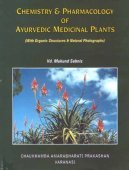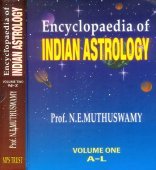Sum, Sūṃ, Suṃ: 5 definitions
Introduction:
Sum means something in Buddhism, Pali, Marathi, Hindi, biology. If you want to know the exact meaning, history, etymology or English translation of this term then check out the descriptions on this page. Add your comment or reference to a book if you want to contribute to this summary article.
In Buddhism
Tibetan Buddhism (Vajrayana or tantric Buddhism)
Source: OSU Press: Cakrasamvara SamadhiSuṃ (सुं) is the bīja associated with Suvarṇadvīpa, according to the Cakrasaṃvara-maṇḍala or Saṃvaramaṇḍala of Abhayākaragupta’s Niṣpannayogāvalī, p. 45 and n. 145; (Cf. Cakrasaṃvaratantra, Gray, David B., 2007).—The Cakrasaṃvara mandala has a total of sixty-two deities. [...] Three concentric circles going outward, the body, speech and mind wheels (kāya-vāka-citta), in the order: mind (blue), speech (red), and body (white), with eight Ḍākinīs each in non-dual union with their Ḍākas, "male consorts".
Associated elements of Cakravarmiṇī and Ākāśagarbha:
Circle: kāyacakra (body-wheel) (white);
Ḍākinī (female consort): Cakravarmiṇī;
Ḍāka (male consort): Ākāśagarbha;
Bīja: suṃ;
Body-part: calves;
Pīṭha: Suvarṇadvīpa;
Bodily constituent: prasveda (sweat);
Bodhipakṣa (wings of enlightenment): smṛtibodhyaṅga (awakening of mindfulness).

Tibetan Buddhism includes schools such as Nyingma, Kadampa, Kagyu and Gelug. Their primary canon of literature is divided in two broad categories: The Kangyur, which consists of Buddha’s words, and the Tengyur, which includes commentaries from various sources. Esotericism and tantra techniques (vajrayāna) are collected indepently.
Biology (plants and animals)
Source: Wisdom Library: Local Names of Plants and DrugsSum in the Urdu language is the name of a plant identified with Fraxinus hookeri Wenz. from the Oleaceae (Jasmine) family having the following synonyms: Fraxinus brandisii. For the possible medicinal usage of sum, you can check this page for potential sources and references, although be aware that any some or none of the side-effects may not be mentioned here, wether they be harmful or beneficial to health.
Source: Google Books: CRC World Dictionary (Regional names)1) Sum in India is the name of a plant defined with Allium sativum in various botanical sources. This page contains potential references in Ayurveda, modern medicine, and other folk traditions or local practices It has the synonym Porrum ophioscorodon (Link) Rchb. (among others).
2) Sum is also identified with Scurrula atropurpurea It has the synonym Cichlanthus philippensis (Cham. & Schltdl.) Tiegh. (etc.).
Example references for further research on medicinal uses or toxicity (see latin names for full list):
· Linnaea (1828)
· A General History of the Dichlamydeous Plants (1834)
· Species Plantarum (1753)
· Bulletin du Jardin Botanique de Buitenzorg (1929)
· Enumeratio Stirpium Plerarumque, quae sponte crescunt in agro Vindobonensi (1762)
· Gardeners Dictionary, ed. 8
If you are looking for specific details regarding Sum, for example extract dosage, chemical composition, diet and recipes, side effects, health benefits, pregnancy safety, have a look at these references.

This sections includes definitions from the five kingdoms of living things: Animals, Plants, Fungi, Protists and Monera. It will include both the official binomial nomenclature (scientific names usually in Latin) as well as regional spellings and variants.
Languages of India and abroad
Marathi-English dictionary
Source: DDSA: The Molesworth Marathi and English Dictionarysūṃ (सूं) [or सू, sū].—ad Imit. of the hiss, whiz, or twang (of a snake, bowstring, ball &c.; also of the whistling or sighing of the wind). 2 An utterance in the play of surapārambī. v kara. sūṃ nighaṇēṃ -suṭaṇēṃ -paḷaṇēṃ -dhāvaṇēṃ To set off or run like a singing gust of wind--a horse, a racer or runner. sūṃ kāḍhaṇēṃ-hākaṇēṃ-dapaṭaṇēṃ-davaḍaṇēṃ &c. To start or put out forcibly (a horse &c.)
--- OR ---
sūṃ (सूं) [or सू, sū].—f (Imit.) The hiss (of a snake &c.); the twang (of a bowstring, arrow, bullet, stone, stick). 2 fig. A sudden running off; starting with a twang, as an arrow from the bow. v mhaṇa, kara.
Marathi is an Indo-European language having over 70 million native speakers people in (predominantly) Maharashtra India. Marathi, like many other Indo-Aryan languages, evolved from early forms of Prakrit, which itself is a subset of Sanskrit, one of the most ancient languages of the world.
Hindi dictionary
Source: DDSA: A practical Hindi-English dictionarySum in Hindi refers in English to:—(a) penurious, miser, niggardly; (nm) a miser; ~[pana/pana] penury, miserliness, niggardliness..—sum (सूम) is alternatively transliterated as Sūma.
...
See also (Relevant definitions)
Starts with (+662): Ajahn Sumedho, Cu-mantirampotu, Cuma, Cumai-tankipotu, Cumaiccapparam, Cumaikaran, Cumaittayir, Cumaiyan, Cumaiyatai, Cumaiyati, Cumaiyirakki, Cumam, Cumanacam, Cumanai, Cumankai, Cumankalam, Cumankalippirarttanai, Cumanta, Cumappu, Cumar.
Ends with (+191): A sum, Abroma fastuosum, Abutilon pannosum, Aconogonon tortuosum, Acronema nervosum, Adenium obesum, Adenosma glutinosum, Adenostemma viscosum, Adiantum incisum, Allium ampeloprasum, Allium fistulosum, Allium schoenoprasum, Allium tuberosum, Amomum squarrosum, Amomum uliginosum, Amomum villosum, Amphineuron immersum, Anacardium excelsum, Anassum, Antidesma velutinosum.
Full-text (+582): Samasabhavana, Yogabhavana, Ityartha, Sarvadhana, Rakama, Ekandari, Jumala, Shredhiphala, Icchaka, Tatparyartha, Nimadasti, Samkalitaikya, Samkalita, Akhilartha, Samgraha, Bahumulya, Yoga, Tasu, Pindartha, Curni.
Relevant text
Search found 234 books and stories containing Sum, Sūṃ, Suṃ; (plurals include: Sums, Sūṃs, Suṃs). You can also click to the full overview containing English textual excerpts. Below are direct links for the most relevant articles:
The limits of happiness < [January – March, 1990]
Is There Bhakti Rasa in Mahabharata? < [January – March, 1997]
The Ceded Districts, the Circars, and the Nizam < [Oct-Nov-Dec 1940]
The Agni Purana (by N. Gangadharan)
Chapter 98 - Mode of installation of the image of goddess Gaurī (gaurīpratiṣṭhā)
Chapter 27 - Mode of performing the initiation rite
Chapter 329 - An abridgement of rules of prosody relating to the Vedic metres
Vakyapadiya of Bhartrihari (by K. A. Subramania Iyer)
Verse 2.110 < [Book 2 - Vākya-kāṇḍa]
Verse 3.7.42 < [Book 3 - Pada-kāṇḍa (7): Sādhana-samuddeśa (On the Means)]
Manusmriti with the Commentary of Medhatithi (by Ganganatha Jha)
Verse 12.116 < [Section XII - Doubtful Points of Law to be decided by the Assembly]
Verse 5.167 < [Section XV - Conclusion]
Verse 9.250 < [Section XXXIV - Punishment of the Not Guilty and acquitting of the Guilty]
The Tattvasangraha [with commentary] (by Ganganatha Jha)
Verse 1246 < [Chapter 17 - Examination of the Definition of Sense-perception]
Verse 1943 < [Chapter 22 - Lokāyata—Materialism]
Verse 187 < [Chapter 7 - Doctrine of the Self (ātman, ‘soul’)]
A Discourse on Paticcasamuppada (by Venerable Mahasi Sayadaw)
Chapter 3 - Summary < [Part 4]
Chapter 9 - Cutting Off The Cycle Of Defilements < [Part 10]
Chapter 2 - Rupa And Ayatana < [Part 4]
Related products




